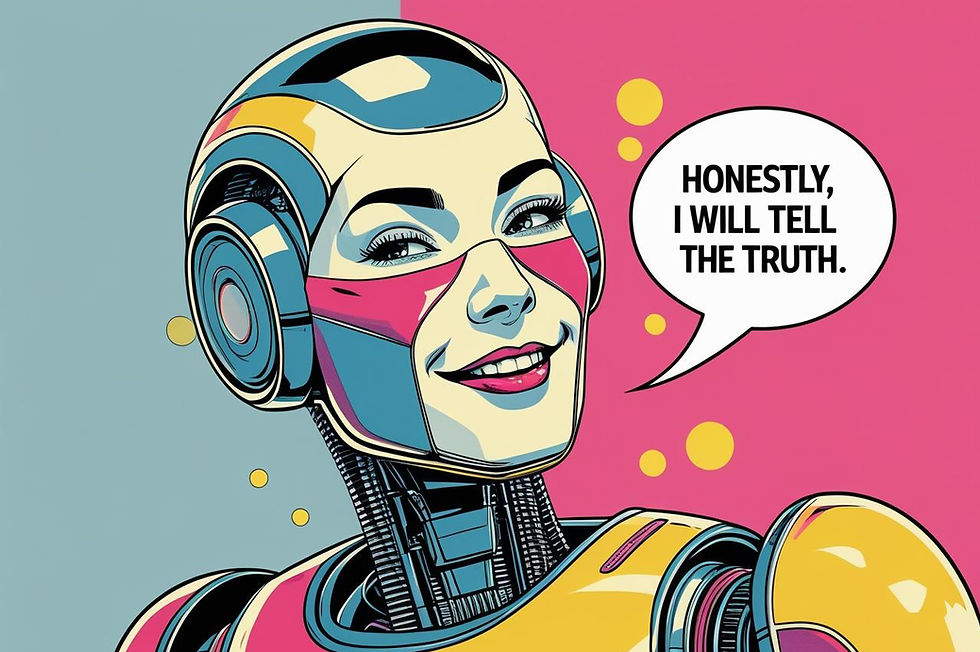Redundancy, Should a Company Tell You if it’s Due to AI?
- Ray Baptiste

- Aug 8
- 3 min read

Let’s not pretend: AI is eating tasks at a pace HR has never had to manage before. Some of those tasks are your people’s, jobs. The question is — if AI is the reason for redundancy, should you say it?
In the UK, redundancy law doesn’t care whether the cause is “chatbots” or “cost-cuts”, it cares whether the requirement for work of a particular kind has diminished. But just because the law gives you wiggle room doesn’t mean your people will forgive you for ducking the truth.
The Case for Saying It’s AI
1. Trust buys you runway: Edelman’s research keeps finding the same thing: employees trust “my employer” more than most institutions, but that trust is fragile. Tell them AI is a factor and you look like an adult talking to adults. This isn’t sentimentality, it’s risk management. Straight talk now stops cynical whispers later.
2. It focuses the consultation on solutions: ACAS guidance is clear: redundancy consultations aren’t just notice periods, they’re about exploring alternatives. If AI is the reason, then the conversation shifts naturally to reskilling, redeployment, or adjusting scope. It’s a chance to offer a bridge, not just a box for their desk.
3. The reality is public anyway: The IMF says 40% of jobs globally are exposed to AI. Challenger data shows 10,000+ roles in July alone were publicly tied to AI adoption. BT has said it will cut around 10,000 jobs to automation/AI by 2030. If your people can read that on the BBC, they can connect the dots to your org.
4. You can pair honesty with opportunity: OECD data: four in five workers using AI say it improves their performance. Say “yes, AI is here,” then invite people to be part of the redesign. That flips the narrative from loss to potential.
The Case Against Saying It’s AI
1. The law doesn’t require it: UK redundancy tests don’t demand you name AI as the driver. Over-labelling can invite unnecessary legal wrangles, especially if people argue an AI system created bias in role selection. Your legal defence is the diminished need, not the tech that caused it.
2. It’s rarely the whole story: Was it AI, or was it a market downturn, or was it a re-org two years overdue? Over-simplifying to “AI” can create a scapegoat and mask the multifactor reality.
3. Disclosure opens other doors: The EU AI Act is looming. Say “AI made us do it” and you could be inviting audits, proof of bias testing, and compliance headaches you’re not ready for. If your AI governance is shaky, that honesty could sting.
Candidate Impact
For candidates, “AI redundancy” triggers different anxieties than “cost-cutting.” It makes them question:
Was I selected fairly?
Was there bias in the tech?
What skills now have currency?
Silence leaves them to answer those questions alone. Klarna’s AI-driven restructuring made headlines for both its scale and its swiftness, but they also framed it within a future-skills roadmap. That’s the difference between brutal and surgical.
My Stance (Brace Yourself)
If AI is materially driving your change, say it, and show you what you have cosidered. Publish governance notes: bias checks, human review steps, and reskilling budgets. If AI is a minor contributor in a larger restructure, say that..
This is HR for grown-ups. Transparency is not a liability, it’s a strategy.
3 Challenges for HR Leaders & Hiring Managers
Decide your disclosure threshold: at what point does AI become a “material” driver you’ll name publicly?
Pair every redundancy announcement with a re-skilling pathway, budget, eligibility, and timeframe.
Audit your AI tools for bias and document human oversight before they’re anywhere near redundancy selection.
“Transparency is a strategy, not a slogan.” — Ray Baptiste
If you hide the role AI plays in redundancies, don’t be surprised when your people find out from LinkedIn instead of you. And when they do, the conversation you avoided will happen anyway — just without you in it.




Comments